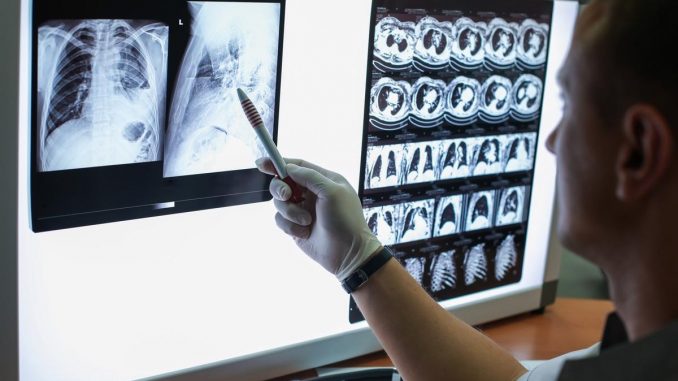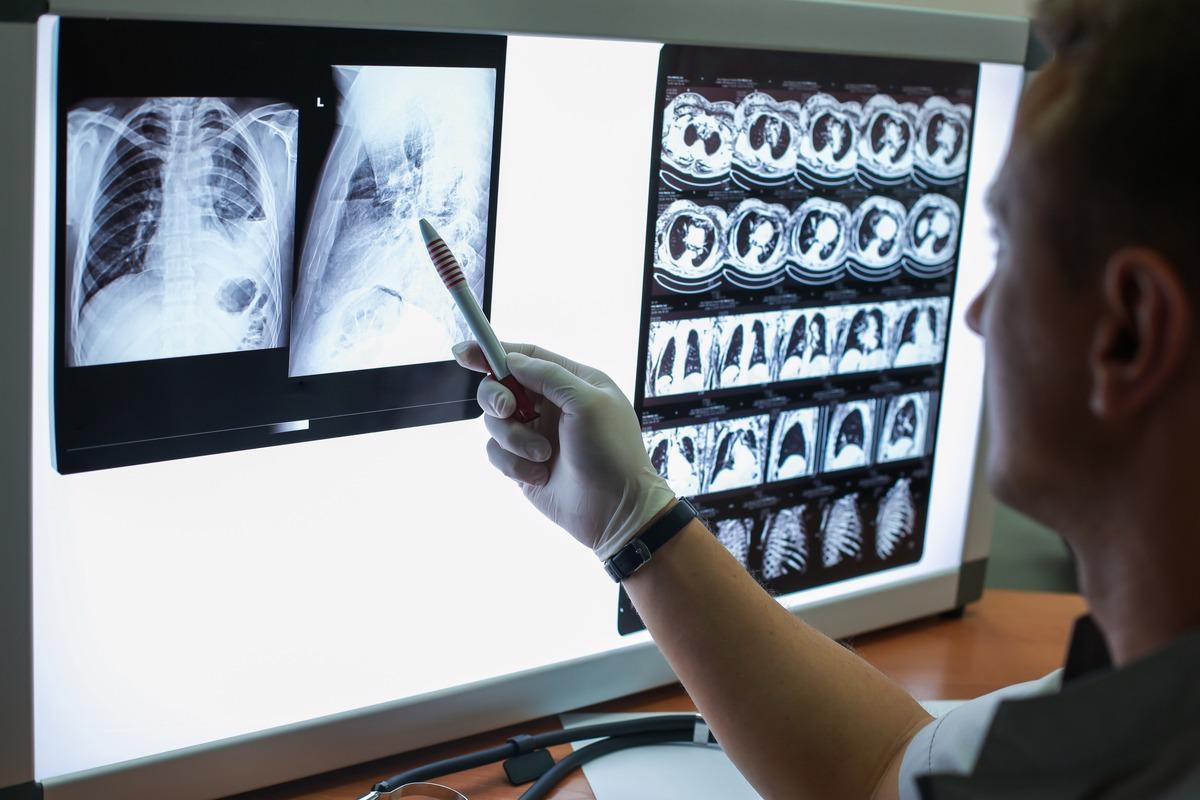
In a recent study published in Nature Machine Intelligence, researchers assessed deep learning workflows involved in computerized tomography (CT) scans of coronavirus disease 2019 (COVID-19).

Researchers worldwide are developing methods to improve the diagnosis and treatment of severe acute respiratory syndrome coronavirus 2 (SARS-CoV-2) infections and disease severity. While various studies have reported the long-term respiratory complications in COVID-19 patients and survivors, extensive research is needed to gauge abnormalities in the CT scans of COVID-19 patients.
About the study
In the present study, researchers evaluated the efficiency of a computer-aided detection (CAD) method called deep-lung parenchyma-enhancing (DLPE) in identifying and measuring pulmonary parenchyma lesions on chest CT scans.
The team trained and validated the DLPE method using a training dataset comprising 3644 CT scans for segmentation of lungs, airways, blood vessels, and heart, as well as the estimation of baseline CT values. The DLPE method was subsequently applied to cohorts of COVID-19 inpatients and survivors. The survivor group included a total of 69 individuals who reported a critical or severe condition throughout their inpatient period and required admission to the intensive care unit. The team collected inpatient data concerning CT scans and clinical metrics and follow-up data related to lung functions, CT scans, and laboratory tests.
The researchers segmented airways and blood vessels in COVID-19 inpatients by establishing a feature-enhanced loss and protocol involving two-stage segmentation. Feature-enhanced loss extracted features from tissues exhibiting self-similarity. These approaches enabled the achievement of state-of-the-art (SOTA) performance in the segmentation of pulmonary blood vessels and airways. Furthermore, DLPE was used to assess the study dataset comprising follow-up information related to COVID-19 survivors. The generalization power of DLPE was also tested on COVID-19 inpatients.
Results
The study results showed that while the DLPE segmentation model was designed specifically for COVID-19 patient airways and blood vessels, it performed significantly better than the SOTA artificial intelligence (AI) methods for patients suffering from severe COVID-19. This indicated the robustness as well as generalization power of the DLPE method. In the case of segments having airways and blood vessels with clear parenchyma, DLPE displayed efficiency comparable to SOTA methods, particularly for tiny structures.
Analyzing COVID-19 survivor data using DLPE showed significant subvisual lesions with 109 cm3 of abnormalities on average, while only 3.5 cm3 of lesions on average were found in the absence of DLPE in each survivor. However, no visible lesions were observed on the follow-up CT scans under the original lung window, clearly visible after being processed under DLPE.
The team believed that the subvisual lesions detected in the follow-up data indicated mild pulmonary fibrosis. These lesions had strong associations with sequelae related to fibrosis, as was observed in the lowered lung capacity, lesser conductance of alveolar-capillary gas, and a worse score on the St. George’s respiratory questionnaire (SGRQ).
The team also noted that the diagnosis of pulmonary fibrosis explained the formations and morphologies of the subvisual lesions in the follow-up CT scans. Moreover, pulmonary fibrosis was also observed under the lung window for the COVID-19 survivor cohort, which was visible only after being processed under DLPE. This indicated that DLPE could sufficiently detect mild traces of fibrosis.
A higher score on SGRQ corresponded to a lower quality of life, with the score being less than 1 for healthy persons. The team noted that an abnormal SGRQ score was the most prevalent sequela. In the follow-up cohort, SGRQ was completed by a total of 46 survivors, including 43 persons who reported that respiratory sequelae impacted their quality of life with a mean SGRQ score of 18.6. Furthermore, radiomics evaluated by DLPE predicted the SGRQ score with sufficient accuracy. Moreover, DLPE radiomics had superlative discriminatory abilities and characterized long-term COVID-19 sequelae.
Among the COVID-19 inpatients, DLPE detected novel subvisual lesions that indicated leakages of plasma fluid due to the disruption of the alveolar epithelium. Notably, plasma fluid leakages reduce the PaO2/FiO2 ratio (PFR), a classifying characteristic of COVID-19 inpatients. The team also observed that when radiomics were quantified in the absence of DLPE enhancement, their precision and the power to reveal key respiratory sequelae remarkably declined.
Conclusion
To summarize, the study findings showed that DLPE displayed robust enhancement and segmentation for varied lung diseases, indicating the wide generalization power of the method. The researchers believe that further studies are necessary to understand the origin, association, and therapy for CT lesions that characterize long-term COVID-19.
- Zhou, L. et al. (2022) "An interpretable deep learning workflow for discovering subvisual abnormalities in CT scans of COVID-19 inpatients and survivors", Nature Machine Intelligence. doi: 10.1038/s42256-022-00483-7. https://www.nature.com/articles/s42256-022-00483-7
Posted in: Medical Science News | Medical Research News | Disease/Infection News
Tags: Artificial Intelligence, Blood, Blood Vessels, Coronavirus, Coronavirus Disease COVID-19, covid-19, CT, Deep Learning, Fibrosis, Heart, Intensive Care, Laboratory, Lung Capacity, Lungs, Pulmonary Fibrosis, Research, Respiratory, SARS, SARS-CoV-2, Severe Acute Respiratory, Severe Acute Respiratory Syndrome, Syndrome, Tomography

Written by
Bhavana Kunkalikar
Bhavana Kunkalikar is a medical writer based in Goa, India. Her academic background is in Pharmaceutical sciences and she holds a Bachelor's degree in Pharmacy. Her educational background allowed her to foster an interest in anatomical and physiological sciences. Her college project work based on ‘The manifestations and causes of sickle cell anemia’ formed the stepping stone to a life-long fascination with human pathophysiology.
Source: Read Full Article